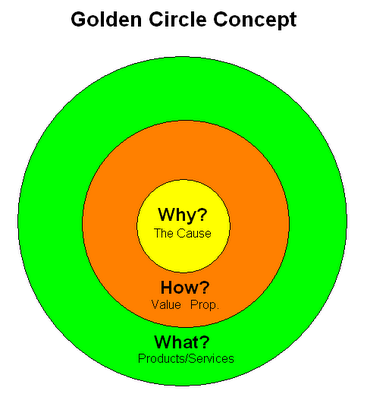Any message that is sent has to be received and acted upon by other humans. That means, to be received effectively, you have to code your message to the way we humans are programmed. Following the circle model from the inside out, rather than the outside in, allows messages to resonate with a viewer's powerful emotional core. This model, called the "golden circle," affects not only marketing messages and advertising, but really all communication in general. What makes Pixar the unstoppable storytelling force it is? What makes almost every corporate training video boring beyond reason? In all honesty, the answer depends on an endless number of variables. Still, a great deal of it comes from the golden circle model.

Underneath of every message communicated, there are whats, hows, and whys. It is up to us as filmmakers to make sure our messages start at the center. With a solid "why," messages break through the noise, and into our consciousness. Without a "why," our messages just become noise themselves.
1 comment:
The greatest source of "Ideas Worth Spreading" is of course TED and I am very glad you brought it up. TED was founded in 1984 by Richard Saul Wurman, an architect and graphic designer notably know for the term "information architecture" of which he is the primary exponent; the art of expressing a model or concept of information used in activities that require explicit details of complex systems
I recommend to everyone that has never seen a TED conference to make it a daily diet since all talks are freely available online. By now there are thousands of conferences (typically 18 min long) that touch on every subject of importance and meaning in this world of ours. An incredible source of inspiration (notwithstanding some serious criticisms.)
Post a Comment